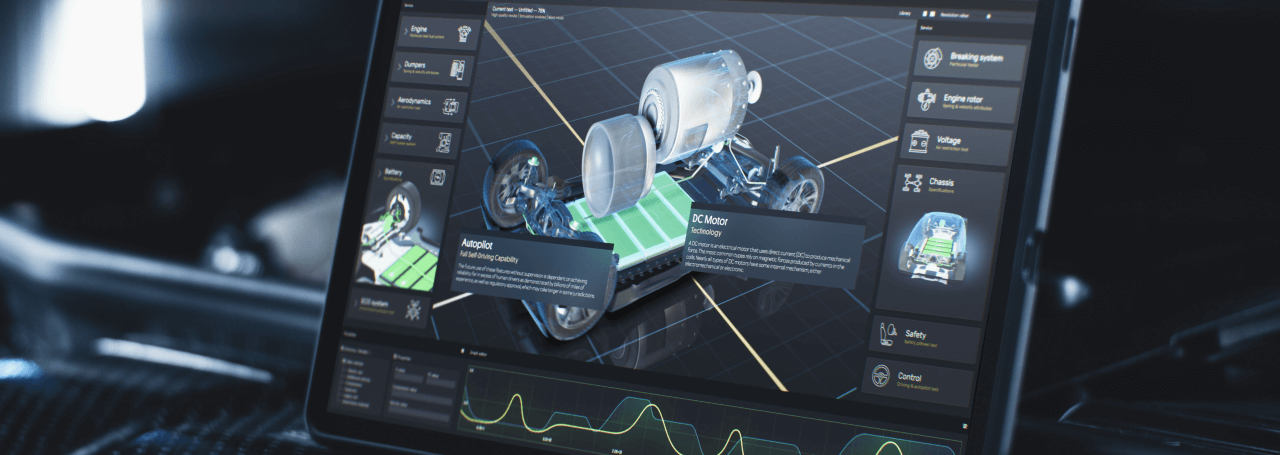- 720×1280 Resolution: The New Standard for Smartphone Screen Sizes and Specialized Displays
- Understanding 720×1280 Resolution
- The Rise of 720×1280 Resolution
- Riverdi’s Contribution to the Display Industry
- Technical Details
- Optimized Pixel Density
- Ruggedization for Demanding Environments
- Medical and Diagnostic Applications
- Retail and Hospitality Use Cases
- Automotive and Transportation
- Industrial HMIs and Handhelds
- Key Display Parameters Overview
- Smartphone Screen Sizes – The Bottom Line
- Riverdi Product Catalog Overview
- Conclusion
- FAQ:
720×1280 Resolution: The New Standard for Smartphone Screen Sizes and Specialized Displays
A screen resolution of 720×1280 pixels has emerged as a highly popular choice for many of today’s leading smartphones. But 720×1280, also known as 720p HD, offers benefits beyond mobile. With careful selection, 720×1280 displays can serve numerous specialized applications ranging from retail to medical to industrial. In this post, we’ll explore the capabilities of 720×1280 resolution and discuss how product development teams can take advantage of this new standard, including the connectivity of Riverdi MIPI Displays.
Understanding 720×1280 Resolution
720×1280 resolution, commonly referred to as HD, offers 720 pixels in the horizontal axis and 1280 pixels in the vertical axis. This resolution provides a crisp and clear display, ensuring that images, videos, and text appear sharp and vibrant. It strikes a balance between performance and power consumption, making it ideal for mobile devices where battery life is paramount.
The Rise of 720×1280 Resolution
720×1280 first gained prominence as a smartphone display resolution with the release of flagship phones. Compared to earlier resolutions like 480×800, 720×1280 offered a noticeable boost in image sharpness thanks to its higher pixel density at screen sizes around 4 to 5 inches.
Pixels per inch (PPI) values for 720×1280 smartphone displays generally range from 300 to 350 PPI. This puts them in the “Retina” class of displays where individual pixels become imperceptible at normal viewing distances of 1 foot or more.
Higher PPI helps reduce eye fatigue over long usage sessions, while benefiting photo viewing, web browsing, gaming, and video playback. Yet 720×1280 stops short of being as demanding on hardware as 1080p displays. This maximizes graphics performance efficiency.
Beyond largest screen smartphone flagships, the 720×1280 is now widely utilized across:
- Ruggedized mobile devices
- Point of sale (POS) systems
- Automotive displays
- Medical devices
- Handheld test instruments
- HMIs and industrial panels
- Digital signage
- Security systems
The resolution nicely balances display sharpness, form factor and cost – important for specialized applications.
Riverdi’s Contribution to the Display Industry
Riverdi is a prominent name in the display sector, known for its diverse range of products tailored to various projects. Their catalog boasts of:
- uxTouch Displays: These are advanced touch screen options that offer an immersive user experience.
- Capacitive and Resistive Touch Screen Options: Depending on the application, Riverdi provides both capacitive and resistive touch screen solutions. While capacitive screens are known for their multi-touch capabilities and responsiveness, resistive screens are durable and can be operated with gloves or styluses.
- Diverse Screen Sizes: Riverdi offers a range of screen sizes, from compact 3.5″ displays to larger 10.1″ panels, catering to different needs and applications.
- Various Graphics Controllers: To ensure compatibility and performance, Riverdi provides a selection of graphics controllers to choose from.
Customization with Riverdi
One of Riverdi’s standout features is its customization options. Recognizing that one size doesn’t fit all, Riverdi allows for tailor-made solutions to fit specific project needs. By using high-quality materials and components, combined with their team’s vast experience, Riverdi ensures that clients receive products that align perfectly with their requirements.
Third-Party Development Tools
Riverdi’s commitment to providing an efficient way for clients to create applications is evident in their support for third-party development tools. They are open to all products and tools that can integrate with Riverdi products. From GUI building tools to development boards and compilers, Riverdi ensures that clients have a plethora of options to choose from, such as the EVE Screen Designer from Bridgetek and the Riverdi click from MikroElektronika.
Technical Details
When it comes to screen resolution phone or specialized devices, 720×1280 displays most commonly leverage LCD panels, often with LED backlights for slim profiles and lower power consumption. However, OLED and AMOLED display technologies are also popular in smartphone screen resolution where higher contrast and true blacks are desirable.
IPS, PLS and other advanced LCD variants offer realistic color reproduction and 178+ degree viewing angles. Capacitive touchscreens are standard for interactive operation. Gorilla Glass and oleophobic coatings enhance durability.
Bezel widths as small as 2mm provide compact system dimensions, suitable for the largest screen smartphones and other applications. 16:9 and 15:9 are common aspect ratios in mobile screen resolution. Display thicknesses under 2mm and power draw under 1 watt benefit portable designs, especially for smartphone screen sizes. Interfaces like DSI, HDMI and LVDS integrate into device electronics.
Optimized Pixel Density
A major appeal of 720×1280 displays is how they hit a sweet spot for pixel density. At display sizes between 4- and 6- inches diagonal, 720×1280 achieves densities between:
- 300 to 350 PPI for 16:9 aspect ratio
- 250 to 300 PPI for 15:9 aspect ratio
This level of sharpness avoids excessive power drain or manufacturing challenges of higher resolutions while still delivering an excellent visual experience for small-screen devices typically viewed from 6 to 18 inches away.
Text retains readability at modest font sizes without requiring magnification or zooming. Icons, menus, maps, schematics and application UIs render cleanly. Photos are sharp across the field of view. Video playback has no obvious pixelation.
For specialized devices where displays are often viewed while holding the unit at arm’s length, the higher pixel density really shines ergonomically. Operators can quickly glean information without excessive squinting or fatigue.
Ruggedization for Demanding Environments
Displays leveraging 720×1280 resolution are available in rugged forms to withstand challenging environments with:
- Wide operating temperature ranges
- Resistance to dust, dirt and water ingress
- Impact, shock and vibration resistance
- Scratch and shatter resistant glass
- Sunlight viewable brightness up to 1000 nits
These capabilities allow 720×1280 displays to serve reliably across:
- Factory floors and shop environments prone to debris and spills
- Extreme cold or hot ambient conditions
- Field locations facing rain, snow and humidity
- Vehicles and equipment with significant shock and vibration
- High-ambient-light outdoor settings
Rugged sealing, optical bonding and coatings defend against hazards. Conformal coatings protect electronics. MIL-STD ratings validate military-grade toughness.
Medical and Diagnostic Applications
In medical environments, 720×1280 resolution enables:
- Crisp rendering of ultrasound imagery
- Sharp graphs and waveforms from patient monitors
- Detailed X-rays, CT scans and medical photography
- Readable digital charts, records and medication data
Displays meet medical safety standards for electrical isolation and biocompatibility. Smooth, flush surfaces with antimicrobial coatings aid infection control. Rapid sanitization is supported.
Wearable patient monitors leverage 720×1280’s balance of compact form factor and high information density. Wireless connectivity integrates with hospital networks and EHR systems.
Retail and Hospitality Use Cases
For point of sale (POS) systems in retail and hospitality settings, 720×1280 provides:
- Sharp label printing and scanning for checkout stands
- Clear display of purchasing options and loyalty programs
- Detailed product information and inventory control
- Immersive video advertising and digital signage
Slim bezels and compact footprints allow discreet POS integration. 10-point projected capacitive touchscreens enable fast operation. Tamper-resistant enclosures secure sensitive data.
Automotive and Transportation
Rugged 720×1280 displays bring infotainment and telematics to:
- Dashboard interfaces in passenger vehicles
- Driver information clusters with speed, diagnostics and navigation
- Fleet management and asset tracking systems
- Aftermarket auxiliary monitors and rear seat entertainment
Optical bonding provides sunlight viewable readability. Automotive-grade components withstand humidity and vibration. Anti-glare polarization enhances safety.
Industrial HMIs and Handhelds
For industrial settings, 720×1280 enables:
- Graphics-intensive HMIs for machine and process monitoring/control
- Detailed schematics, manuals and part drawings
- Broad connectivity with PLCs, drives, sensors and automation equipment
- Clear visualization on handheld inspection and diagnostic tools
Wide operating temperature ranges allow reliable shop floor operation. IP ratings withstand dust, dirt and liquids. Customization suits unique environments.
Key Display Parameters Overview
In essence, the 720×1280 resolution offers a balance of clarity and energy efficiency, making it a top choice across diverse sectors.
Here is a table with the most important parameters and their typical values for the mentioned contexts:
Device Type | Resolution | Brightness (nits) | Refresh Rate (Hz) | Power Consumption (W) | Durability | Special Features |
Mobile Devices | 720×1280 | 300 | 60 | 5 | Moderate | Touchscreen |
Home Appliances | 720×1280 | 250 | 60 | 8 | Moderate | Touch & Voice Control |
Industrial Devices | 720×1280 | 400 | 60 | 10 | High | Ruggedized & Touchscreen |
Military | 720×1280 | 350 | 60 | 10 | Very High | Ruggedized & Anti-Glare |
Marine | 720×1280 | 300 | 60 | 12 | High | Water-Resistant & Anti-Glare |
Medical Devices | 720×1280 | 350 | 60 | 15 | High | Touchscreen & High Precision |
This table provides a concise overview of the typical values for key display parameters across different device types.
Smartphone Screen Sizes – The Bottom Line
For both mobile and specialized devices, 720×1280 resolution empowers compelling usability without excessive cost or power burden. This new sweet spot for pixel density balances sharpness, legibility, form factor, and manufacturing practicality.
Looking ahead, 720×1280 resolution is likely to remain highly relevant even as smartphone screens grow larger. For example, a 6.5″ diagonal 16:9 display at 720×1280 achieves a pixel density of 268 PPI. While not quite Retina class, this pixel density still enables reasonably sharp imagery and text on a screen that is large enough for immersive video watching and gameplay. While 1080p and 1440p displays push the envelope on sheer resolution, proven 720×1280 continues hitting key ergonomic and engineering sweet spots across screen sizes from 4″ to 7″. For many mobile and specialized devices, 720×1280 delivers the optimal balance of high visual quality, compact form factor, battery efficiency, and cost-effectiveness.
Riverdi Product Catalog Overview
Riverdi is a leading name in the display technology sector, offering a diverse range of products tailored to meet the specific needs of various projects. Here are the key highlights from their catalog:
- uxTouch Displays: Advanced touch screen options that promise an enhanced user experience.
- Touch Screen Options:
- Capacitive Touch Screens: Known for their multi-touch capabilities and responsiveness.
- Resistive Touch Screens: Durable and can be operated with gloves or styluses.
- Screen Sizes: Riverdi caters to a wide range of requirements by offering screen sizes ranging from 3.5″ to 10.1″.
- Graphics Controllers: A variety of graphics controllers are available to ensure compatibility and optimal performance.
- Product Categories:
- STM32 Embedded Displays: Tailored for embedded applications.
- RGB, LVDS, MIPI DSI LCD Displays: A range of display technologies to suit different needs.
- EVE Intelligent Displays: Smart displays with integrated functionalities.
- HDMI Displays: For high-definition media interfaces.
- E-Paper Modules: Energy-efficient displays mimicking paper aesthetics.
- Evaluation Boards: For testing and development purposes.
- Accessories: Additional components to complement the main products.
- Customization Options: Riverdi stands out with its customization offerings. They provide tailor-made solutions to fit the specific needs of a project, ensuring that clients receive products that align perfectly with their requirements.
- Third-Party Development Tools: Riverdi supports third-party development tools to provide clients with an efficient way to create applications. They are open to all products and tools that can integrate with Riverdi products. Some notable mentions include the EVE Screen Designer from Bridgetech and the Riverdi click from MikroElektronika.
For those looking to delve deeper into specific products or require engineering support, Riverdi offers 1-Hour of Engineering Support and maintains an active Blog & News section. They also feature products like the Bridgetek BT817Q (EVE 4), showcasing their commitment to cutting-edge technology.
Incorporating Riverdi’s products into the context of various device types, such as mobile devices, home appliances, and industrial devices, can significantly enhance the user experience, durability, and functionality of these devices.
Conclusion
Carefully selected 720×1280 displays with the right feature sets can serve well across smartphones, medical gear, retail systems, transportation, signage, instrumentation and industrial equipment. The resolution hits a versatile convergence of high visual quality and practical engineering.
In summary, even if not suited for biggest screen smartphone offers, 720×1280 resolution defines a new standard delivering excellent visuals without going overboard on density. For display engineers and sourcing teams, 720×1280 warrants consideration across a widening sphere of applications.
Displays leveraging 720×1280 resolution will continue gaining ground across mobile and specialized devices where compact size, power efficiency, ruggedness, and screen clarity all matter. Evaluating where 720×1280 can best serve your technical requirements and customers makes sound strategic sense.
FAQ:
- What is the significance of the 720×1280 resolution?
- It offers a balance between clarity and power efficiency, making it a standard for smartphone displays.
- What products does Riverdi offer?
- Riverdi offers uxTouch displays, capacitive and resistive touch screens, various screen sizes, and graphics controllers, among others.
- Why should one consider touchscreen capabilities in design?
- Depending on the device’s application, touch capabilities can enhance user interaction, with options like capacitive (multi-touch) or resistive (durable) touchscreens.
- How can one ensure optimal power management in devices with LCD displays?
- Features like adaptive brightness, sleep modes, and efficient display types can help optimize power consumption.
- Why is durability important for LCD displays?
- Especially for industrial or outdoor applications, durable displays with higher protection ratings ensure longevity and consistent performance.
- How can third-party development tools aid in device design?
- Tools and platforms can simplify the development process, and companies like Riverdi support these, making application creation easier.
- What should engineers prioritize when choosing a display for design or refresh?
- Engineers should prioritize the device’s primary application, display type, power management, interface compatibility, and durability, among other factors.
By understanding the nuances of the 720×1280 resolution and leveraging the offerings of companies like Riverdi, engineers can design state-of-the-art devices that cater to modern-day requirements.
DISCOVER OUR
Whitepaper
Achieve the perfect user-display interaction with the right Touch Sensor IC. Ever faced issues with phantom touch events or certification? Boost your R&D like a pro with our Whitepaper!



